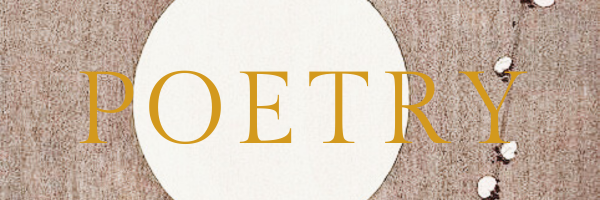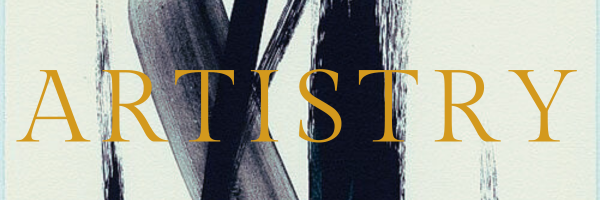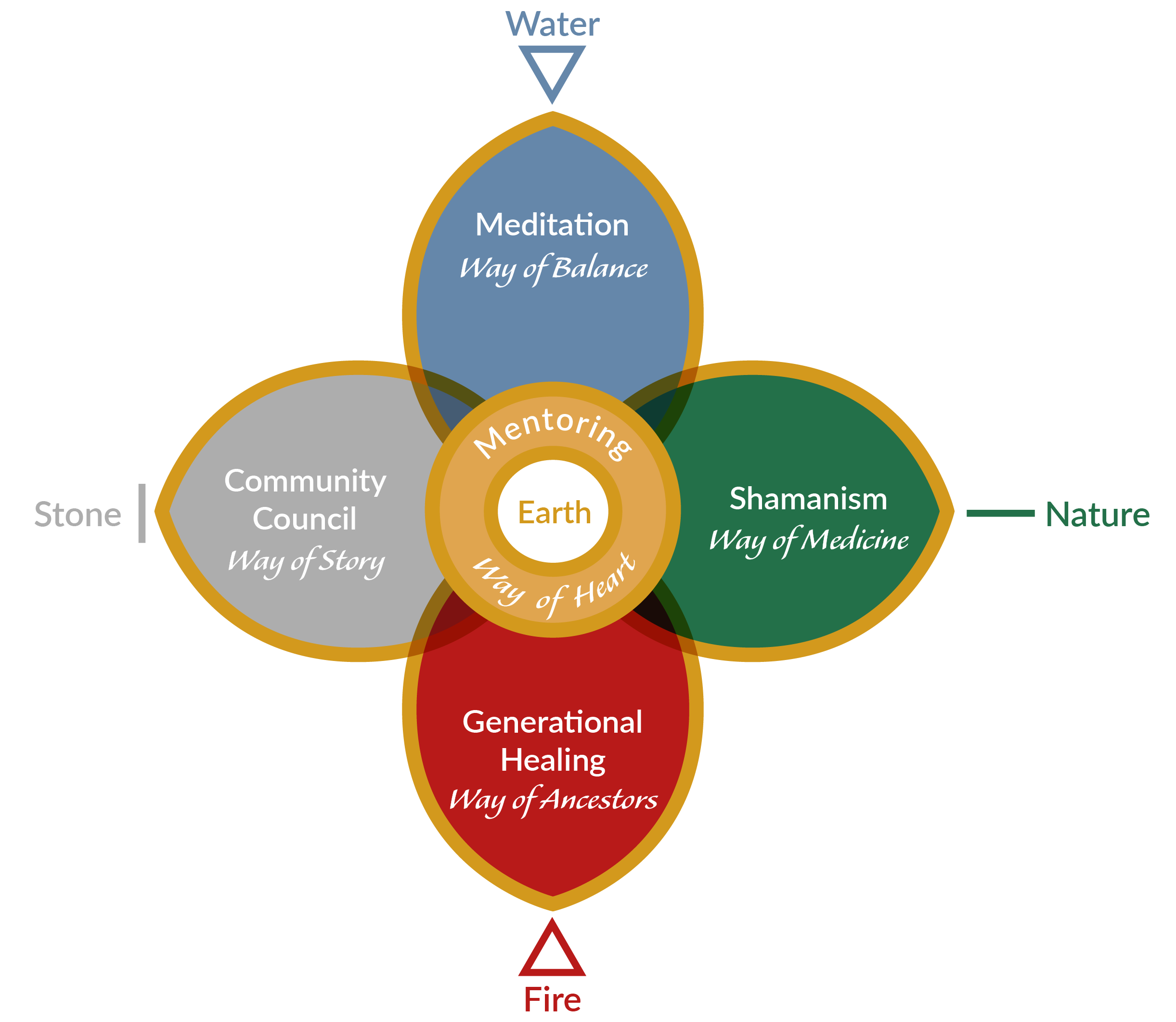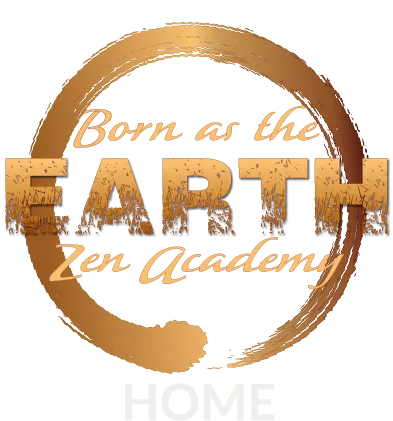
The Mountains and the Rivers sing eighty-four thousand verses. Do you hear them?
An ancient master once said:
Thirty years ago, before studying Zen, I saw mountains as mountains and rivers as rivers.
When I had more intimate knowledge, I came to see mountains not as mountains and rivers not as rivers.
But now that I have attained the substance, I again see mountains just as mountains, and rivers just as rivers.
“The zazen of a beginner is innocent. It’s free, open, and receptive. But after a while, it becomes rote. It’s one thing to really practice this incredible Way with the whole body and mind, and quite another to simply look like a Zen practitioner. Much of our practice involves maintaining this freshness, this receptivity.”
Daido Roshi, the late abbot of Zen Mountain Monastery, illuminates further…
“This teaching is not saying that mountains are mountains; it says that mountains are mountains. The river sings the eighty-four thousand verses. Do we hear them? The mountain reveals the form of the true dharma, the virtue of harmony. Can we see it?
This is the mountain of the nature of all dharmas, the ten thousand things, the whole phenomenal universe. It pervades all time and space, from the beginningless beginning to the endless end. In other words, it’s the body and mind of the ten thousand things—and, it’s just a mountain.
Thus, we should thoroughly study these mountains. When we thoroughly study the mountains, this is the mountain training. Then these mountains and rivers themselves spontaneously become wise ones and sages.
When Dogen says, “thoroughly study the mountains,” he means for us to take these mountains and rivers as the koan of our lives. Whether we look at these mountains and rivers with the eyes of a biologist, a geologist, a hydrologist, a sage, a deer, as the mountain, as the river, the fact is that they are constantly proclaiming the dharma. The river sings the eighty-four thousand verses. Do we hear them? The mountain reveals the form of the true dharma, the virtue of harmony. Can we see it?
When we go deep into ourselves, when we engage Zen practice fully, that practice becomes the practice of all buddhas past, present, and future. It is the verification and actualization of the enlightenment of Shakyamuni Buddha and all of the subsequent buddhas. It is also the practice and verification of these mountains and rivers, and of your life and my life, the life of wise ones, sages, and ordinary beings.”
~ John Daido Loori: from Lion’s Roar
“These mountains and rivers themselves spontaneously become wise ones and sages.”
Traveling deeper into the unknown spaces of ourselves, we naturally expand in relationship with the mystery of everything. Our ideas of how things appear begin to dissolve. We become more intimate with what is beyond what ‘seems to be’. We pick up a scent of what those ideas and things actually are. Tending ourselves now toward a truer reality the scent of seeing life just as it is without our conditioned projections – their is-ness, becomes stronger.
Simultaneously, an intimacy with the mystery continues with what lies beyond this unadorned is-ness. Our mind, becoming less tainted and more innocent, we begin to see the simple ordinariness of phenomena while continuing to expand and open to what has birthed the ten thousand things.
To truly hear the songs of the rivers and mountains, to communicate and be intimate with the grasses and trees, to develop sincere, love-filled exchanges with all our relations, a maturing intimacy is called forth. For this, a deepening connection and grounding supports our movement beyond the edge of what our minds have framed this life to be. Meeting life with the practice of going beyond, we polish ourselves into the spotless place steadily dissolving into this unknowable source of being.
We cannot hear the eighty-four thousand verses when framed in what we think we know of what it all ‘seems to be’. However, the edges we experience in the mind, the frame, can become a gateway, as starting place from the ‘known’ into the absolute unknown where the “mountains and rivers are not mountains and rivers”. Yes, we can confine ourselves in what seems to exist and in so choosing accept a particular kind of restriction or barrier.
Or, in practicing oneness and interconnectedness, begin to hear the song and walk the path with increasing presence and awareness, becoming aware of its edges, as we follow the scent of the path’s edge-less-ness.
Beyond the edges, the edges that define ‘things’ – the path invites a letting-go of the edges that define and separate it from the unknown. Going beyond the edge of separation ultimately dissolve the path. Here is where the mountain is no longer a mountain. This edge-less-ness is an empty spaciousness of no-thing-ness, the primal womb of creation, the being we call Mother, the mother of all Being.
Having dissolved into, and re-emerged from the emptiness beyond form we “gain the substance”. We return with insight into diversity in its multitudinous and specific forms and their interdependent oneness. Returning with this substance we are sovereign, liberated and henceforth engage life as it is, free of conditioned entanglements. This is the practice of being intimate with just what is – where “a mountain is just a mountain”. Here we see the true medicine nature, the dharmas of all being and beings, of life’s diverse existence – the defined and undefinable existing together. Gaining the substance, our true nature, restored with our gift received from that intimate place where a mountain is not a not mountain, we are liberated, free from our entanglements, and see that it is “just” a mountain.
Oftentimes it can be challenging to live in the moment in this way because we are limited in our mind of comparison, in the rational part of our self that divides everything into this and that, into self and other, and so we bring our hands together, the left and right, into gassho (prayer), and unify the separateness within with what is without.
Bowing with gratitude, we receive the healing nectar of forgiveness, abundance and generosity waiting for us in our hearts. We open the channel for the oracle of love, the Dharma, to sing its true song in the sacred choir of life, into being.
~ Ekan Nangaku

Experiencing Depression? How Meditation can help.
To help understand how the brain changes during meditation, we look at the brain’s neuroplasticity – the brain’s ability to change and adapt in response to new experiences and environmental changes. In order for the brain to adapt and change, new neural pathways need to be created. Originally believed to only happen in childhood, it has been proven that new neural pathways are created throughout one’s lifetime. During bouts of depression, the creation of new pathways are disrupted. This is where meditation comes in.
There are Mountains Hidden in Hiddenness.
Stones hold a storehouse of secrets. Our evolution has depended on them. They were our first tools; our first art; symbolised our first myths; and the first sounds and languages. Stones have oriented our human collective from conception through to memorialised immortality. Gatekeepers to unknown realms, they inspire us to their noblest peaks and, they become barring barriers and porous boundaries.
“When we connect with our bones, the stones of our bodies, we connect with the powerful medicine of the mountains.”

Ask the Earth and the trees and plants, soil, rocks, rivers and mountains.
Ask the weather systems for guidance.
How can I help you?
How can I serve you?
Ask the birds. Honour and tend all beings.
Let them know with your kindness that you are an ally.
Then listen carefully, with your whole body.
Ears of your hands.
Frequency detector of the heart.
Listen for the subtleties that ripple beneath.
Listen for the new stories rising.
Purify. Open up. Free yourself of yourself. Become empty. Hollow body.
A dancing bag of bones.
The new ways will come through us.
The ancient ways will come through.
~ Red K Elders




Japanese Rock Wrapping
Rocks and Stones have travelled with human evolution right from the beginning of time. In the early 9th Century in China an interest in learning from the ancient wisdom of rocks and stone was initiated. Later the Daoist sages and medicine people considered rocks as the bones of the Earth. Confucianism honoured the natural world in its’ ability to embody human qualities, holding in great regard the reciprocity between the human and nonhuman worlds. In Zen Buddhism stone has a significant
Mizuhiki (水引 which literally translates to ‘water-pull’) is an ancient Japanese artform of knot-tying. ssociated with sacred ceremonies, offerings, and gift-giving, the Mizuhiki has evolved in importance and significance. When a gift is tied with a Mizuhiki, it suggests it has been safeguarded and shielded from prying eyes and creates a sense of “cleanliness and purity”.
In Zen Buddhism practices, rocks have a special place. The karesansui or “dry gardens” are particularly famous for their representation of still or moving bodies of water using pebbles. Unlike the Daoists who would admire nature for its wild wisdom, the Zen Buddhists were looking to go beyond it.
A Zen practitioner herself, Betsy brings her mind to a meditative state with each piece of wrapping. Sometimes it might take her weeks before she achieves the level of perfection she seeks. The natural, organic qualities of shape, size, and texture of the rocks inspire her.
“The fact that they are infinitely older than we are is humbling and opens up soulful creative energy for me to work with from the start. Some nights I go to sleep just seeing different rock shapes and forms and wake up excited to begin a day in the studio with the rocks” she said in the American Craft Council interview.

I was introduced to Born As The Earth Zen Academy over a year ago. I have been a student / apprentice in their Gatekeeper Training program. I have also participated in their Meditations, Community Council, and have had several Divination sessions with Ekan Nangaku.
I hold Gil, Raine, and Nangaku in high regard. My life has been forever changed as a result of the outstanding teaching and warm welcome from the BEZA community!
I encourage anyone interested in expanding their own spiritual practice to reach out to BEZA to find out more about the Academy and how they can participate in such an incredible place of healing and learning.
May BEZA continue to grow and expand worldwide. Blessings and love to all of those that I was able to meet along the way. I look forward to continuing my studies with BEZA. The Academy has proven to be an outstanding teaching facility and now, my new found spiritual partner.
Apprentice Training

BEZA’s Medicine Wheel

Training includes:
Personal development within a spiritual community
Zen and Elemental Meditation training
Private Mentoring sessions
Community Council (talking circle) training
Private Divination sessions
Embodiment practices: breath work, qigong, art, rituals and so much more….
It takes 12 months to complete the journey around the Medicine Wheel comprised of 5 Elemental Bodies – Fire, Water, Earth, Nature, & Stone.
Join Apprentice Training cycle at the beginning of any Elemental Module
What is Mindfulness?
Beyond Meditation Apps & Beyond the ‘Mindfulness Movement’ & its commoditization?
Without context, there is no mindfulness! Joshua from The Emerald says that without context, “we are swimming in our own detritus”.

Module 1
Visionary Fire Module
Way of the Ancestors
1 February – 16 March 2025
Work with what inspires – your dreams, aspirations and passion for life. Transmute all that stands in the way of your spiritual potential. Channel your purpose into realities that align with your truth. In this gateway you work with light & vision; alchemical illumination; dreams & myth; divination; and ancestral healing.
Practical Spirituality
Dreams | Vision | Ignition | Transmutation | Ancestral Connection

All in Exchange for your Donation (DANA)

Way of Balance
Zen Meditation Training
29th Oct: 7-9PM(SAST)
Master Dogen said, “To study the Buddha Way is to study the self, to study the self is to forget the self, and to forget the self is to be enlightened by the ten thousand things.”
Whether you are a beginner or an experienced practitioner, engage this precious and easily accessible opportunity to awaken to your True Nature.
Find revelation, joy and solace in the serene landscapes of your physical, mental, emotional and spiritual body.
We tend to see body, breath, and mind as separate, but in zazen we begin to see how they are one inseparable reality.


